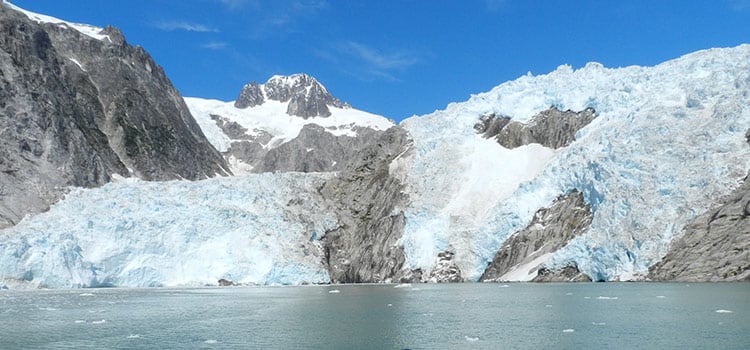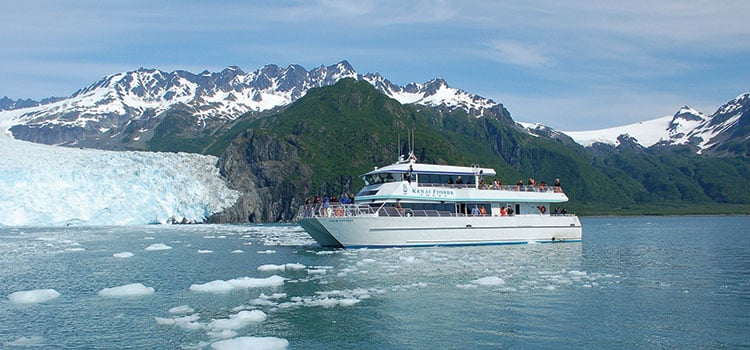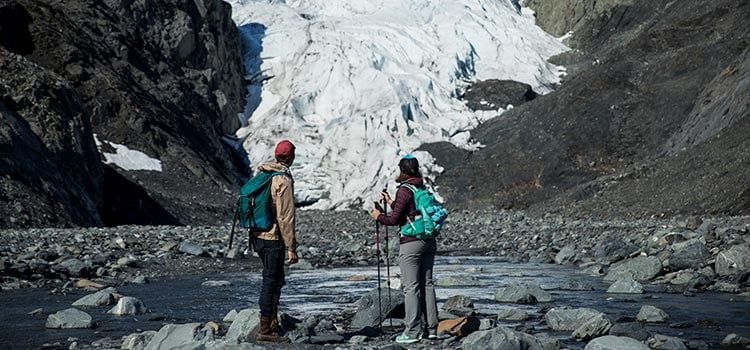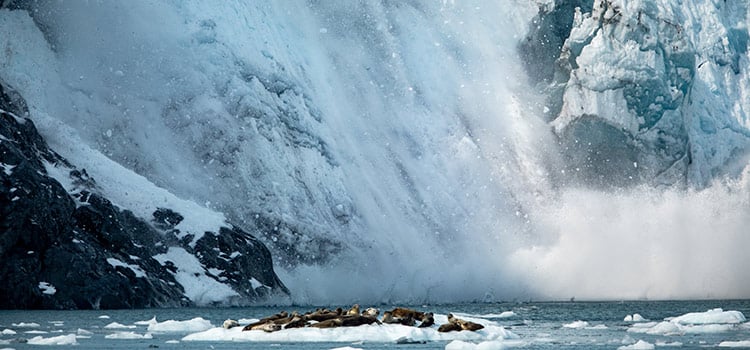Kenai Fjords National Park is a vast, jagged wilderness, carved into existence by ancient icefields and the passage of time. It’s a scenic mashup of sky-high peaks, temperate rainforest, pristine inlets and ice—a whole lot of ice. More than half of Kenai Fjords is obscured by it, and glaciers are one of Alaska’s coolest natural attractions. There are upwards of three dozen named glaciers in the national park—all of which originate from the colossal 700 square-mile Harding Icefield.
There’s so much to learn about Kenai Fjords National Park's unique glacial landscape. To help inspire your next Alaska adventure, we’re sharing five cool things about the park’s glaciers, including the best way to see them up close!
Glaciers are thick icy masses, made from snow that has compressed over time. A lot of snow, a cold climate and lack of wind are required for their creation. Oh, and patience. Glaciers take a really long time to materialize. Glacier formation is also infinite, and the ebb and flow are audible. Visit one of Kenai Fjords’ many glaciers and you’ll likely hear the telltale creaks and groans of its movement.

The vibrant blue color associated with glaciers occurs because light has to travel really deep, through layers upon layers of compressed snow. As the ice thickens, air bubbles and imperfections are squeezed away and light transmitting ice crystals are born. Long wavelengths of light, towards the red end of the color spectrum, are absorbed by the ice, while blue light is scattered. The result? An ethereal blue hue that wows the camera.

A tidewater glacier flows from land to sea, then terminates below the water’s surface, and guess what? Kenai Fjords National Park boasts five of them. A guided boat cruise promises the best perspective for viewing the icy phenomenon. The Kenai Fjords National Park Tour is a six-hour roundtrip adventure from Seward that visits either the Holgate and Aialik tidewater glaciers. If you want to experience the faraway Northwestern tidewater, you’ll have to embark on a thrilling full-day cruise.

Alpine glaciers form in mountain basins, way up high. From there the mass of snow and ice builds and expands down the mountain, pulled by its immense weight. Exit Glacier, near Windsong Lodge just outside of Seward, is the park’s most accessible roadside glacier. Guided hikes—with a local naturalist—depart from the lodge twice daily. Piedmont glaciers are fan-shaped alpine glaciers that flow through a valley, and into an open-plain. These types of glaciers can also terminate in freshwater. Bear, the park’s longest glacier, is a perfect example. The hallmark sight is fronted by a protected iceberg-dappled lagoon that’s popular with kayakers looking to explore the area’s rich marine life. Kenai Fjords Tour's Resurrection Bay Tour is a great way to view Bear Glacier.

The thunderous sound of a glacier calving can echo for miles. So, what exactly does calving mean? It happens when a large chunk of a glacier becomes unstable—typically due to melt or erosion—and breaks away from the larger mass. Icebergs are formed as a result. To see and hear a glacier calve on a Kenai Fjords Tour is pure bucket-list material.
The captains at Kenai Fjords Tours have deep knowledge about glaciers. On a cruise, they'll take you to see some up close and to gaze at others far in the distance. It's an enriching, spectacular and timely experience. Join us on board this summer!
For more information on the glaciers of Kenai Fjords National Park, visit the park's website.
Insider tips, inspiration and deals — delivered straight to your inbox.